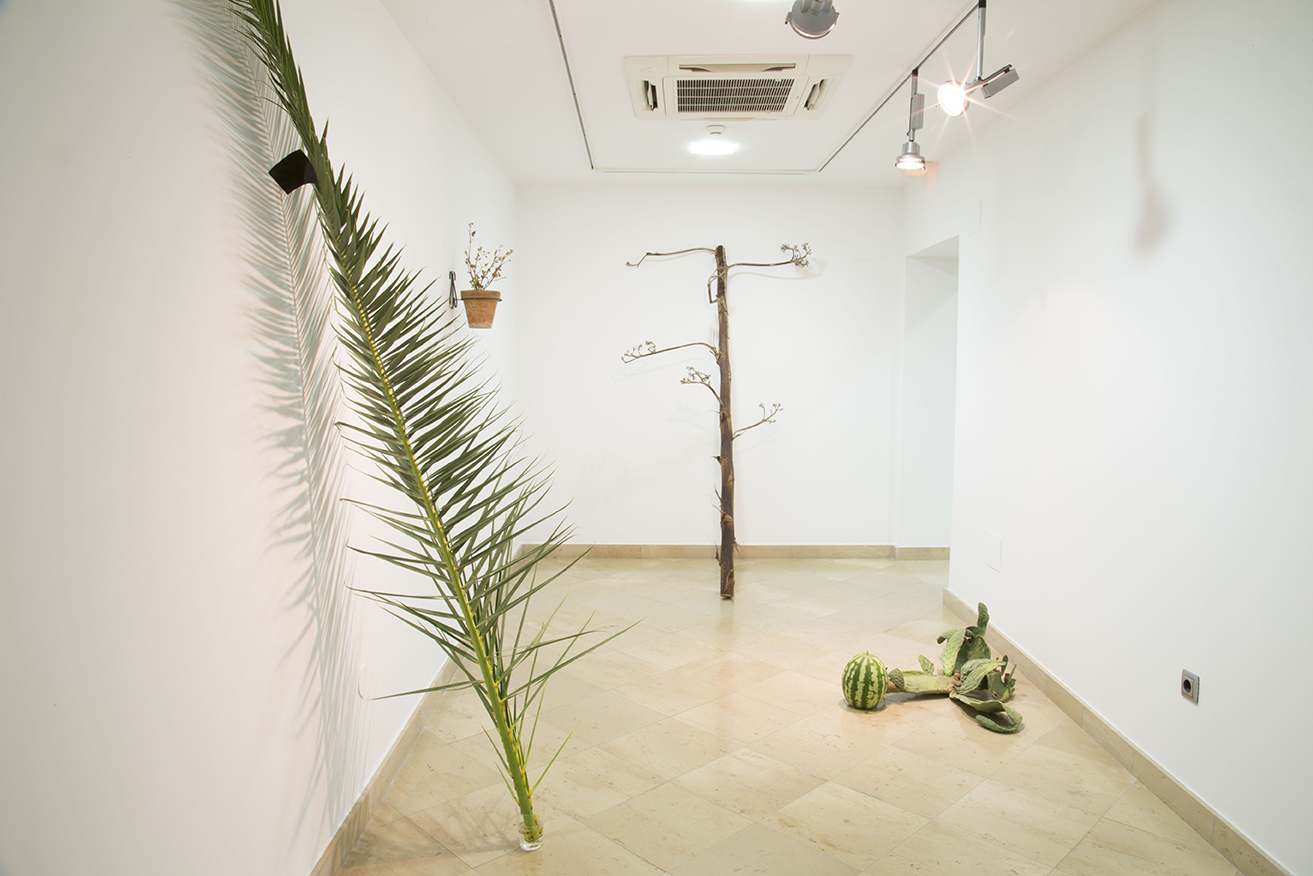CECILIA VICUÑA © 2016, VIDEO STILL” EL VIENTO DE LOS MUERTOS” EXHIBITION AT MUSEO CENTRO DE ARTE PEPE ESPALIÚ
ANDREA GALVANI © 2016, THE END. EXHIBITION AT MUSEO CENTRO DE ARTE PEPE ESPALIÚ
JAVIER ARCE © 2016, MICROPOLÍTICA. INSTALLATION VIEW. EXHIBITION AT MUSEO CENTRO DE ARTE PEPE ESPALIÚ
Angelica Teuta. cecilia vicuña. JAVIER ARCE. PABLO JANSANA. BROCK ENRIGHT © 2016, INSTALLATION VIEW. EXHIBITION AT MUSEO CENTRO DE ARTE PEPE ESPALIÚ
DARIA IRINCHEEVA © 2016 Anthropocene Markers. ESPERANZA MAYOBRE. © 2016 Antenas de golindano. INSTALLATION VIEW. EXHIBITION AT MUSEO CENTRO DE ARTE PEPE ESPALIÚ
CAROLINA SAQUEL © 2016, “untitled (rushes de Antonio / Ardia 2014)” EXHIBITION AT MUSEO CENTRO DE ARTE PEPE ESPALIÚ
ALEJANDRO ALMANZA PEREDA © 2016, AUTO REVERSE. EXHIBITION AT MUSEO CENTRO DE ARTE PEPE ESPALIÚ
SANTIAGO REYES VILLAVECES. NIKE . BALAM BARTOLOME. MIICHI. PEPE ESPALIU © 2016, INSTALLATION VIEW. EXHIBITION AT MUSEO CENTRO DE ARTE PEPE ESPALIÚ
DARIA IRINCHEEVA © 2016, Anthropocene Markers. INSTALLATION VIEW. EXHIBITION AT MUSEO CENTRO DE ARTE PEPE ESPALIÚ
ESPERANZA MAYOBRE © 2016, ANTENAS DE GOLINDANO. EXHIBITION AT MUSEO CENTRO DE ARTE PEPE ESPALIÚ
CATHERINE CZACKI © 2016, EXHIBITION AT MUSEO CENTRO DE ARTE PEPE ESPALIÚ
PABLO JANSANA. ANDREA GALVANI. SANTIAGO REYES VILLAVECES © 2016, INSTALLATION VIEW. EXHIBITION AT MUSEO CENTRO DE ARTE PEPE ESPALIÚ
JAVIER ARCE © 2016, MICROPOLITICAS. EXHIBITION AT MUSEO CENTRO DE ARTE PEPE ESPALIÚ
PABLO JANSANA © 2016, LLEVe LAS SILLAS DEL JARDIN A QUE LES CAMBIARAN LAS ESTERILLAS POR UNAS DE FITNESS. EXHIBITION AT MUSEO CENTRO DE ARTE PEPE ESPALIÚ
DARIA IRINCHEEVA © 2016, UNTITLED 1 / COLLECTIVE THINKER. EXHIBITION AT MUSEO CENTRO DE ARTE PEPE ESPALIÚ
SANTIAGO REYES VILLAVECES © 2016, Repertory (ideograms). EXHIBITION AT MUSEO CENTRO DE ARTE PEPE ESPALIÚ
JAVIER ARCE © 2016, MICROPOLITICAS. ( detail )EXHIBITION AT MUSEO CENTRO DE ARTE PEPE ESPALIÚ
PABLO JANSANA, SANTIAGO REYES VILLAVECES © 2016, ( detail ) UNTITLED. EXHIBITION AT MUSEO CENTRO DE ARTE PEPE ESPALIÚ
LARS LAUMANN © 2016, HALLAND. INSTALLATION VIEW. EXHIBITION AT MUSEO CENTRO DE ARTE PEPE ESPALIÚ
SANTIAGO REYES VILLAVECES © 2016, Andaluz ( DETAIL ) EXHIBITION AT MUSEO CENTRO DE ARTE PEPE ESPALIÚ
BALAM BARTOLOME © 2016, VIDEO STILL “MIICHI”. EXHIBITION AT MUSEO CENTRO DE ARTE PEPE ESPALIÚ
JAVIER ARCE © 2016, MICROPOLITICAS ( DETAIL ) EXHIBITION AT MUSEO CENTRO DE ARTE PEPE ESPALIÚ
PABLO JANSANA © 2016, PATA DE GALLO ( IRON ) PABLO JANSANA - SANTIAGO REYES VILLAVECES © 2016 UNTITLED. EXHIBITION AT MUSEO CENTRO DE ARTE PEPE ESPALIÚ
BROCK ENRIGHT © 2016, EXHIBITION AT MUSEO CENTRO DE ARTE PEPE ESPALIÚ
Catherine Czacki © 2016, EXHIBITION AT MUSEO CENTRO DE ARTE PEPE ESPALIÚ
Esperanza mayobre. brock enright. daria irincheeva © 2016, EXHIBITION AT MUSEO CENTRO DE ARTE PEPE ESPALIÚ
BALAM BARTOLOME © 2016, VIDEO STILL “HORROR”. EXHIBITION AT MUSEO CENTRO DE ARTE PEPE ESPALIÚ
PABLO JANSANA © 2016, EXHIBITION AT MUSEO CENTRO DE ARTE PEPE ESPALIÚ
JAVIER ARCE © 2016, MICROPOLITICAS( DETAIL ) EXHIBITION AT MUSEO CENTRO DE ARTE PEPE ESPALIÚ
ESPERANZA MAYOBRE. BROCK ENRIGHT © 2016, EXHIBITION AT MUSEO CENTRO DE ARTE PEPE ESPALIÚ
PABLO JANSANA © 2016, ESTERILLAS RECORD TAPE CAMARON ON ESCAYOLA ( DETAIL ) EXHIBITION AT MUSEO CENTRO DE ARTE PEPE ESPALIÚ
JAVIER ARCE © 2016 MICROPOLITICAS, INSTALLATION VIEW. EXHIBITION AT MUSEO CENTRO DE ARTE PEPE ESPALIÚ
FELIX LAZO. BROCK ENRIGHT © 2016 . EXHIBITION AT MUSEO CENTRO DE ARTE PEPE ESPALIÚ
JAVIER ARCE © 2016 MICROPOLITICAS . EXHIBITION AT MUSEO CENTRO DE ARTE PEPE ESPALIÚ
LARS LAUMANN © 2016, VIDEO STILL “HALLAND” EXHIBITION AT MUSEO CENTRO DE ARTE PEPE ESPALIÚ
CATHERINE CZACKI. PABLO JANSANA © 2016, INSTALLATION VIEW AND DETAIL . EXHIBITION AT MUSEO CENTRO DE ARTE PEPE ESPALIÚ
CORDOBA, SPAIN 2016
la fragua residency, santa clara convent, september 1--22
exhibition at museo CENTRO DE ARTE pepe espaliú, opening on september 22
berlin, germany 2016
kolonie wedding exhibitions, "caught in the influence from josef alberts to cecilia vicuña"
at okkraum29 and rosalux, opening on october 29
TEXT BY CATHERINE CZACKI AND PABLO JANSANA, 2016.
Focused on how the interaction between artists from differing geographical/cultural contexts influences individually and historically centered artisticproduction, this project seeks to investigate how this influence extends to particular concepts of what constitutes a home––ideologically and physically. The legacy of cross-cultural/global exchange has catalyzed transformations regarding notions of home space, via the influence of two or more cultural contexts meeting and exchanging ideas (a transformation additionally problematized by colonial encounter). “Mi casa es su casa” (my home is your home) is a classic Latin-American phrase that defines the domestic as a shared space between self and other, reflecting the hospitality and charisma of people from a particular context, in this case, Latin-America. This phrase is the springboard through which to explore the notion of home as a domestic space and/or political and social concept.
The proposal is to mount several exhibitions with members of the artist collective Kandor 13––using this notion of home as the central theme through which to discuss the representation of home and domesticity as contained space. The artists in Kandor 13 negotiate how notions of home and domesticity arecommunicated in a variety of ways––through intersections between design, architecture and art––negotiations that are additionally explored as intellectual concepts through language and aesthetics. Questions provoked by the artists in the collective include: What does domestic mean politically and/or socially? What defines a home ideologically and physically? What populates interiors to make them homes? How does the concept of interiority come under question when we define space as domestic/home versus public/world?
The inquiry launched by this series of exhibitions is based loosely on the exhibition at the Americas Society in Nueva York, 2015- “Moderno: Design for living in Brazil, Mexico and Venezuela,1940-1978”––a project that examined how Modern design transformed domestic interiors in Latin America. Although regions of Latin America had particular cultural qualities and histories, Modern aesthetics became fervently embraced by different countries as an ideological vehicle for progress. By encouraging the “modern way of living” governments promoted the objectives of modernization. The years after the Second World War marked the start of a period of artistic emergence in Latin America visible internationally. New national art scenes were born, design vocabularies were invented––designers and architects began to see themselves as active agents of Modern national identity. Latin American designers developed unique styles to reflect the changing cultural weather and local material traditions. The growing economy boosted consumption and national industries were promoted, especially those in the industry for household goods designed to populate new Modern interiors.
This renewed utopian hope encouraged artesanal designers and artists to produce modern pieces adapted to the local taste and environment. A two-way influence emerged. Latin America was undergoing an industrial age, ushering in Modernism, which had emerged in the United States and Europe because of their industrial shifts. Latin America was influenced by those contexts, and influenced them in turn with unique geographically based versions and interpretations of the unfolding of Modernism. Modernism, as an international imperative, thus acted as a shared syntax or language that underscored a variety of practices.
Contemporary art is confronted with a series of historical problems when individual artistic practices are re-contextualized through the ubiquitous lens of Modernism. Topics that we hope to investigate as related to artistic/historical subjectivity include trans-cultural exchange, authorship rights, political/social landscapes, and the issue of varying conceptions about materiality as related to ideas of progress. Below is a story about art, design and history that exemplifies the themes––a story which was also the subject of artist Jill Magid’s work, Homage (2014):
Revisiting the “Moderno” exhibition via videos and texts––its primary focus on design is revealed. There’s an extract of a lecture that details a story regarding an exchange between architect/designer Luis Barragan and artist/designer Joseph Albers. As the story goes, they had a well-known mutual admiration for each other’s work. Luis Barragan had hanging on the wall of his home a print of a painting by Joseph Albers alongside a fake/remade version of a Joseph Albers painting. Albers, in his back and forth travels to Mexico, stopped at Clara Porset’s home (Porset was a Cuban born designer then living in Mexico). Clara, in admiration of Barragan’s furniture, had copied one of his chairs. When Joseph Albers saw this chair, he asked her to make another copy for him (Clara didn’t have any problems with participating in copyright infringement). This chair remains at the Joseph and Anne Albers Foundation in Connecticut, this chair that looks like a Barragan, but is signed by Albers and was produced by Porset.
“Tu casa es mi casa” reveals itself as a problematic phrase when read in the light of cultural exchange and copyright. It is one of the goals of Kandor 13 to reveal these relationships of cultural sharing in a public platform, negotiating the history of intellectual/artistic exchanges across geographical distances as they travel over and under differing cultural contexts.
This project explores how national identity is a psychological concept as much as a political one––issues of repatriation; international property rights and copyright law; as well as authorship and ownership --- are rendered visible as they relate to objects and humans that exist in a web of transcultural influence. This ongoing project results in a series of exhibitions consisting of objects, sculptures, installations, writing and performances by the artist members of K13. Exhibitions of the project exist as opportunities to push the narrative forward, and reflect --— within the work and through the framing of it—on the different ways in which influence is legible and how the legal and/or social parameters around ideas of originality differ in each country where the works are shown.
Image caption: An exhibition held at the Palacio de Bellas Artes in Mexico City in 1952, showing Clara Porset's outdoor furniture designs that were reproduced in 1957 by IRGSA, for the Hotel Marques in Acapulco. At the time, Porset was one of few well-known women designers. She was one of the first known designers to integrate folk materials and ideas into modernist aesthetics, reflective of changing concepts of what could be allowed into the modernist interior space. Before moving to Mexico City, Porset had attended Black Mountain College where she studied under Joseph Albers, who subsequently became her close friend.






































